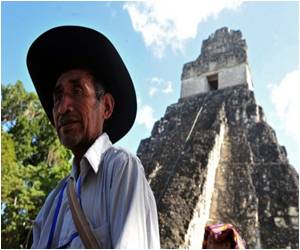A new research has suggested that humans were able to develop a sophisticated calendrical system thousands of years earlier than previously believed.

The site - created by Stone Age Britons about 10,000 years ago - is almost 5,000 years older than its nearest rival - an ancient calendar from Bronze Age Mesopotamia.
According to the archaeologists, the complex at Warren Field, Crathes, Aberdeenshire, was designed to represent the months of the year and the lunar phases of the month.
The site which was in use for some 4,000 years, from around 8,000BC (the early Mesolithic period) to around 4,000BC (the early Neolithic), were periodically re-cut - in all probability many times, which had made it impossible to find out whether or not they originally held timber posts or standing stones after being first dug 10,000 years ago.
However, variations in pits' depths suggests that the arc has a complex design - with each lunar month potentially divided into three roughly ten day 'weeks,' which represents the waxing moon, the gibbous/full moon and the waning moon.
The 50 metre long row of 12 main pits have been arranged as an arc that faces a v-shaped dip in the horizon out of which the sun rose on mid-winter's day.
Advertisement
The 12 pits may also have had another role to play by representing the lunar month.
In its role as an annual calendar, a pattern of alternating pit depths hints at the adjacent months, which may have been paired in some way, potentially reflecting some sort of dualistic cosmological belief system - known in the ethnographic and historical record in many parts of the world, but not detected archaeologically from the Stone Age.
Source-ANI









